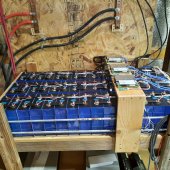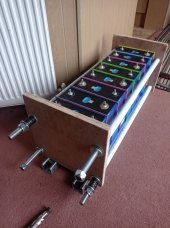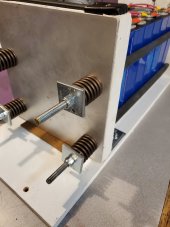Found this:
https://www.evlithium.com/hot-lithium-battery/946.html
So without a fixture, capacity is reduced by ~2.5% after ~250 cycles (~0.01% capacity lost per cycle) while with a 300KgF fixture, initial capacity loss is about twice that rate (~0.02% capacity lost per cycle or ~5% after ~250 cycles).
Break-even appears to be around ~1500 cycles where capacity is reduced to ~88.125% with or without a fixture (average of ~0.0081% capacity lost per cycle on either case).
So for the first 4 years of use, you can really only count on an Eve 280Ah cell delivering a maximum of 247Ah of capacity either way (assuming 1 cycle / day), but beyond that, unclamped cells will only deliver ~80% / 224Ah of initial capacity for ~2650 cycles / 7.2 years while use of a clamping fixture will deliver ~80% / 224Ah of initial capacity for ~4000 cycles / 11 years.
If the ~double rate of capacity loss over the first ~1500 cycles is all that is being referred to, that’s really not that big of a deal.
Looking closely at the unclamped data, however, it appears that unclamped capacity actually increases by ~2% initially.
So an unclamped 280Ah cell actually delivers over 285Ah (as several have characterized) and if you have a new 280Ah cell deliver 277-280Ah, it’s actually already been degraded by 2-3% (meaning 200-300 cycles equivalent).
200-300 cycle-equivalent capacity degradation is probably a fair swag for what to expect from the ‘Grade A Matched’ cells purchased from budget aftermarket resellers on Alibaba / AliExpress.
But if you get any cells delivering cycle-equivalent capacity-degradation levels of more than 2-3 times this level (meaning over 600 cycle-equivalent capacity degradation of over ~4%, that’s indication of a truly defective or substandard cell.
So cells delivering less than 270Ah tested at 25C are probably worth trying to exchange or get a replacement for but cells delivering over 270Ah (tested at 25C), probably not (since your just asking to exchange one cell for another likely to deliver equivalent capacity).







